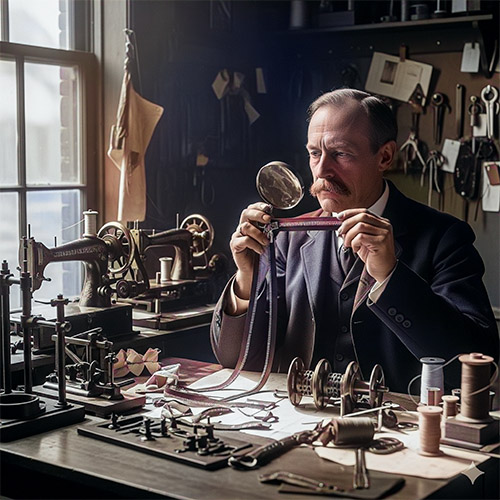 The zipper, commonly called a zip, is today an everyday object, found on jeans, bags, coats, or even shoes. It is so widespread that we almost forget it was the result of a patient invention, the fruit of several attempts before becoming established.
The zipper, commonly called a zip, is today an everyday object, found on jeans, bags, coats, or even shoes. It is so widespread that we almost forget it was the result of a patient invention, the fruit of several attempts before becoming established.
The first experiments date back to the 19th century. In 1851, the concept emerged for the first time when Elias Howe, the inventor of the sewing machine, filed a patent for an “automatic clothing closure device.” But his idea went nowhere: the time was not yet ripe, and his system was considered too complex.
A few decades later, in 1891, an American engineer, Whitcomb Judson, imagined a “sliding fastener” system, mainly intended for shoes. He presented it at the Chicago World’s Fair in 1893. But this prototype, unreliable and difficult to use, failed to achieve commercial success.
The real turning point came in 1913, thanks to Gideon Sundback, a Swedish engineer who had emigrated to the United States. By improving Judson’s model, he developed a more practical mechanism: two strips of fabric fitted with metal teeth that interlock using a slider. Sundback filed his patent in 1917, and his invention quickly became the first functional zipper.
At first, the zipper was mainly used for boots and tobacco pouches (small leather cases to store tobacco). It was only in the 1920s and 1930s that the fashion industry began to take an interest. Designers then saw in the zip a modern, practical, and aesthetic solution that could replace buttons and laces.
In France, it was given the name fermeture à glissière or fermeture éclair, the latter term being popularized by the brand Éclair Prestil, a French company that manufactured and marketed zippers starting in 1924.
Today, the zipper is ubiquitous. It can be found in luxury couture as well as ready-to-wear fashion, not to mention sports and military equipment. Whether made of metal, plastic, or designed to be invisible, it combines functionality and design.
An everyday object, the zip is a fine example of innovation born from a series of failures, refinements, and flashes of intuition. A seemingly simple invention, but one that has permanently transformed the way we dress and live.
FM
